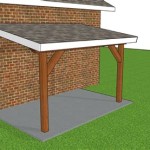Your article must include how to remove the old patio screen door latch, how to install the new patio screen door latch and important considerations when choosing a new patio screen door latch. ```html
Patio Screen Door Latch Replacement: A Comprehensive Guide
Patio screen doors are essential for enjoying fresh air and natural light while keeping insects and debris outside. However, like all mechanical components, the latch on a patio screen door can wear out, break, or become damaged over time. Replacing the latch is a straightforward home improvement task that can restore the functionality and security of the door. This article provides a comprehensive guide to replacing a patio screen door latch, covering the necessary steps, considerations, and potential challenges.
Before beginning the replacement process, it is crucial to understand the different types of patio screen door latches available. The most common types include:
- Hook Latches: These latches feature a hook that engages with a strike plate on the door frame. They are known for their simplicity and ease of use.
- Plunger Latches: Plunger latches utilize a spring-loaded plunger that retracts when the handle is pressed, allowing the door to open. These latches often offer a more secure closure than hook latches.
- Lever Latches: These latches use a lever mechanism to engage and disengage the latch. They can be found in various designs and are often considered more aesthetically pleasing.
Removing the Old Patio Screen Door Latch
The first step in replacing a patio screen door latch is to remove the existing latch. This process typically involves the following steps:
1. Preparation: Gather the necessary tools. These typically include a screwdriver (usually Phillips head), potentially a small flathead screwdriver for prying, and possibly pliers if any parts are stuck or corroded. A work surface or designated area for the old parts is also recommended.
2. Locating the Fasteners: Examine the existing latch for screws or other fasteners. These are usually located on the interior and exterior handles, as well as on the latch body itself. Some latches may have hidden screws covered by decorative plates or caps which need to be removed first.
3. Removing the Screws: Using the appropriate screwdriver, carefully remove all screws securing the latch components. Turn the screws slowly and deliberately to avoid stripping the screw heads. If a screw is particularly stubborn, try applying penetrating oil and allowing it to sit for a few minutes before attempting to remove it again.
4. Separating the Handles and Latch Body: Once the screws are removed, carefully separate the interior and exterior handles from the latch body. The latch body, which contains the latching mechanism, can then be detached from the door. Pay attention to the orientation of the parts as they are removed, as this will be helpful during the installation of the new latch.
5. Removing the Strike Plate: Locate the strike plate on the door frame that the latch engages with. Remove the screws securing the strike plate and detach it from the frame. Retain these screws as they may be needed for the new strike plate.
6. Cleaning the Area: Once the latch and strike plate are removed, clean the surrounding area of the door and door frame. This will remove any dirt, debris, or old sealant that may hinder the installation of the new latch.
Installing the New Patio Screen Door Latch
After removing the old latch, the next step is to install the new one. This process generally follows these steps:
1. Preparing the New Latch: Unpack the new latch and all its components. Read the manufacturer's instructions carefully, as the installation process may vary slightly depending on the brand and model. Ensure all necessary parts are present and accounted for.
2. Installing the Latch Body: Insert the latch body into the opening in the door where the old latch was located. Align the screw holes and secure the latch body with the provided screws. Make sure the latch is oriented correctly, ensuring that it will engage properly with the strike plate on the door frame.
3. Attaching the Handles: Attach the interior and exterior handles to the latch body. Align the handles properly and secure them with the provided screws. Tighten the screws firmly, but avoid over-tightening, which could damage the handles or latch body. Verify that the handles move freely and smoothly and that the latch mechanism is functioning correctly by testing the handles.
4. Installing the Strike Plate: Position the new strike plate on the door frame in the location where the old strike plate was previously installed. Align the strike plate with the latch and ensure that the latch engages properly with the strike plate when the door is closed. If necessary, adjust the position of the strike plate to ensure a smooth and secure closure. Secure the strike plate with the provided screws.
5. Testing the Latch: Thoroughly test the new latch by opening and closing the door several times. Verify that the latch engages and disengages smoothly and that the door closes securely. If the latch does not function properly, re-examine the installation and make any necessary adjustments.
6. Making Adjustments: Slight adjustments might be necessary to ensure optimal performance. This could involve slightly adjusting the strike plate position or the tension on the latch mechanism if applicable. Carefully observe how the latch engages and adjust accordingly until a smooth and secure closure is achieved.
Important Considerations When Choosing a New Patio Screen Door Latch
Selecting the right replacement latch is essential for ensuring the functionality and security of the patio screen door. Several factors should be considered when choosing a new latch:
1. Compatibility: Ensure that the new latch is compatible with the existing door. Measure the thickness of the door and the distance between the screw holes to ensure that the new latch will fit properly. Note the handing of the door (left-hand or right-hand) as some latches are designed specifically for one or the other. Choosing a latch that is not compatible can lead to installation difficulties and ultimately necessitate a return.
2. Material and Durability: Choose a latch made from durable materials that can withstand the elements and frequent use. Common materials include metal (such as aluminum, stainless steel, or brass) and high-quality plastics. Consider the climate in your area and select a material that is resistant to corrosion and rust if applicable. A more robust material will generally offer a longer lifespan for the latch.
3. Security: Consider the level of security provided by the latch. Some latches are more secure than others, offering greater resistance to forced entry. If security is a primary concern, consider a latch with a more robust locking mechanism or reinforced components. Plunger latches and lever latches generally offer higher security than basic hook latches.
4. Ease of Use: Select a latch that is easy to use for all members of the household. Consider the handle design and the force required to operate the latch. A latch that is too stiff or difficult to manipulate can be frustrating to use, especially for children or individuals with limited dexterity.
5. Aesthetics: Choose a latch that complements the style and appearance of the patio screen door and the surrounding decor. Latches are available in a variety of finishes and designs, so it is possible to find one that blends seamlessly with the existing aesthetic. Consider the finish of the door hardware and choose a latch with a matching or complementary finish.
6. Price: Patio screen door latches are available at a variety of price points. Consider your budget and choose a latch that offers a good balance of quality, durability, and features within your budget. While the cheapest option may seem appealing, it is often worth investing in a slightly more expensive latch that is made from higher-quality materials and will last longer.
By carefully considering these factors, homeowners can select a replacement patio screen door latch that meets their needs and provides years of reliable service. Correct installation following these steps will restore the functionality and security of the patio screen door, enabling enjoyment of the outdoors while maintaining a comfortable and secure indoor environment.
```
A 177 Prime Line Plastic Screen Door Latch Pull

Sliding Screen Door Latch 5 1 8

Screenco Sliding Screen Door 3 1 2 Black Handle

Pella Door Screen Latch Sliding Long Handle Ebay

Prime Line A 148 Sliding Screen Door Latch Strike 2 Adjustable Steel

Sliding Screen Door Latch And Pull 3

Prime Line 3 25 In Black Plastic Reversible Handed Handle A 150 At Lowes Com

Prime Line Die Cast Black Right Hand Sliding Screen Door Latch A 104

Screen Door Latch And Pull Assembly

Sliding Screen Door Latch Strike Here S How To Fix It








